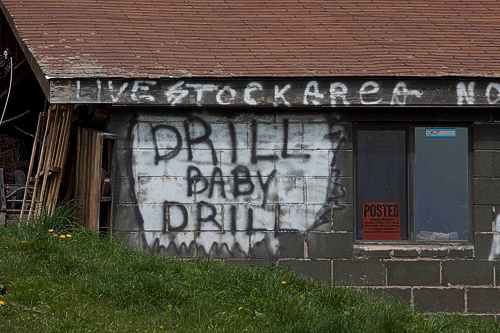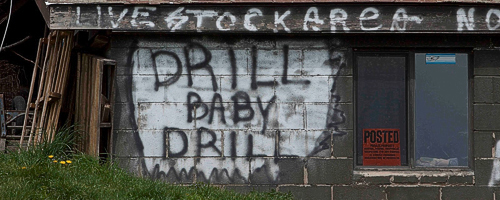President Barack Obama surprised many during his second inaugural address by making a big push for advancements against climate change. It seemed as if we might see a different version of Obama in his second term.
What the frack?

President Barack Obama surprised many during his second inaugural address by making a big push for advancements against climate change. It seemed as if we might see a different version of Obama in his second term.
While on Jan. 26 there may have been hope for battling climate change, the story’s changed. Obama’s State of the Union address contradicted that notion; he not only lacked specifics, he also showed that we’re settling in for another four years of compromising rather than spearheading change.
The president partnered talk of battling changes in weather patterns with praise for American-drilled oil. He used the word “pipeline,” and even if it wasn’t necessarily meant to reference the Keystone XL, it’s difficult not to think that hints are being dropped on the American people. Furthermore, he received great applause for his intention to speed up permits for oil and gas extraction. This oil extraction he talks about is, in large part, hydraulic fracturing.
The debate over hydraulic fracturing (or hydrofracking, as it’s commonly known) has escalated over the last several years, yet many are unfamiliar with the term. It happens frequently in the Northeast, in places like upstate New York and Pennsylvania, which are situated on top of the Marcellus Shale, a unit of marine sedimentary rock that contains natural gas reserves.
Extracting natural gas or oil using hydrofracking requires pumping water, sand and hundreds of chemicals at very high pressure into wells to open cracks in a gas reservoir. The process requires large amounts of freshwater—according to Source Watch, an estimated 70–140 billion gallons of freshwater is used each year in the U.S. to fracture 35,000 wells.
Water used in the process becomes toxic after the extraction of the natural gas or oil, making it unusable for agriculture and undrinkable for animals and humans. One of the major concerns for those living in the Northeast is that the drilling occurs deep in the ground and could affect underground aquifers that sustain the region’s water supply.
The opposite side of the argument, however, is that we’re running out of options. Hydrofracking not only helps to sustain our high fossil-fuels consumption, it also provides work for those who live in many of the oil-rich areas where mills have been shut down and agricultural work is dying out. The issue has received significant attention, especially in films such as Gus Van Sant’s Promised Land, starring Matt Damon, which came out in December 2012.
When I heard the president say that we were drilling at home more than ever, I couldn’t help but feel disappointed. On the one hand, we’re finally addressing climate change, and on the other, we’re promoting activities that we know destroy our environment.
There’s a huge contradiction in acknowledging that we need to stop pumping pollutants into the air, yet in the same breath advocating for a process that pumps pollutants directly into our water, not to mention the billions of gallons of water used in the process.
Indeed, we’re in a tight bind. There is opposition to both the Keystone XL pipeline (which would run a pipe from the tar sands in Alberta, Canada, through the U.S. and down into the Gulf of Mexico) and the continued invasion of countries with high oil reserves so that we can command their resources.
We need oil because we can’t stop consuming it. In climate change we see the very damaging effects of our dependency, yet we shift our attention to a different process that doesn’t prevent the pollution of our resources. There’s no question about where the toxins come from or how undrinkable a water supply becomes as a result of hydrofracking.
Certainly, the president addressed the growth of wind farms and solar power arrays, but what we need is a real plan, a forceful one that explains the damage we’re doing, not to an unseen population oversees, but to people within our own country.
In short, we need a climate change plan that addresses the real trouble we’re in, not one that sugarcoats a method for oil and gas extraction that poses serious risks.





